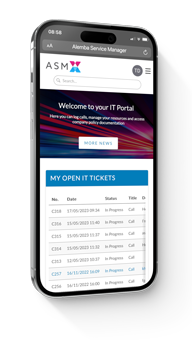Industry
Uses
Flexible Options
Services


Effective IT Service Management (ITSM) is essential for maintaining smooth and efficient IT operations. However, the implementation of ITSM processes and tools can pose significant risks to business operations if not managed correctly. Disruptions can lead to downtime, financial losses, and a decline in customer satisfaction. It is crucial to adopt comprehensive risk management strategies during ITSM software implementation to mitigate these risks and ensure seamless operations.
The first step in mitigating risks during ITSM solution implementation is to understand the potential risks involved. These risks can include:
To mitigate these risks and ensure a smooth ITSM implementation, organizations should consider the following strategies:
Effective ITSM implementation begins with thorough planning and preparation. Develop a detailed implementation plan that outlines the scope, objectives, timeline, and resources required. Include risk management ITSM strategies in the plan to identify potential risks and define mitigation measures. Engage key stakeholders and ensure that everyone understands their roles and responsibilities.
Conducting a risk assessment is crucial for identifying and evaluating potential risks associated with the ITSM implementation. This involves analyzing the likelihood and impact of each risk, and prioritizing them based on their severity. Use this assessment to develop a risk management ITSM plan that includes specific actions to mitigate identified risks.
Implementing ITSM processes and tools incrementally can help minimize disruptions. Instead of deploying the entire system at once, consider a phased approach where changes are introduced gradually. This allows for continuous monitoring and adjustment, reducing the risk of significant disruptions.
Data is a critical asset, and its protection should be a top priority during ITSM implementation. Ensure that comprehensive data backup and recovery procedures are in place before starting the implementation process. Regularly back up data and test recovery procedures to ensure they work effectively in case of any data loss or corruption.
User resistance can be a significant barrier to successful ITSM implementation. Engage employees early in the process and involve them in decision-making. Provide comprehensive training to ensure that users understand the new ITSM processes and tools. Address their concerns and demonstrate how the changes will benefit them and the organization.
Before a full-scale rollout, conduct pilot testing of the new ITSM processes and tools in a controlled environment. This allows you to identify and address any issues before they impact the entire organization. Use feedback from the pilot testing phase to make necessary adjustments and improvements.
Continuous monitoring is essential to ensure that the ITSM implementation is progressing smoothly and to identify any emerging risks. Establish a monitoring system that tracks key performance indicators (KPIs) and provides real-time insights into the implementation process. Regularly communicate progress updates to all stakeholders, keeping them informed and engaged.
A structured change management process is critical for managing changes during ITSM implementation. This involves assessing the impact of changes, obtaining necessary approvals, and communicating changes effectively. A robust change management process helps minimize disruptions and ensures that changes are implemented smoothly.
Security should be a priority during ITSM implementation. Conduct security assessments to identify vulnerabilities and implement necessary security measures to protect sensitive data. Ensure that all new systems and processes comply with security standards and regulations.
After the ITSM implementation, conduct a thorough review to assess its success and identify areas for improvement. Gather feedback from users and stakeholders to understand their experiences and challenges. Use this feedback to make continuous improvements to the ITSM processes and tools.
Mitigating the risk of disrupting operations during ITSM implementation requires a strategic and comprehensive approach. By understanding the potential risks and adopting effective risk management ITSM strategies, organizations can ensure a smooth and successful implementation. Comprehensive planning, incremental implementation, data protection, user engagement, and continuous monitoring are key to minimizing disruptions and achieving the desired outcomes. By prioritizing these strategies, organizations can navigate the complexities of ITSM implementation and enhance their IT operations without compromising service quality or business continuity.

Interested in learning about Alemba can minimize the risks associated with ITSM implementation?
Request a demo Contact us today
Back to Blog